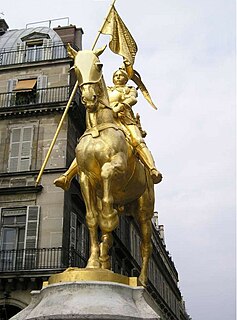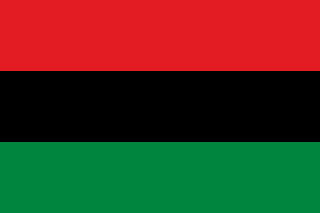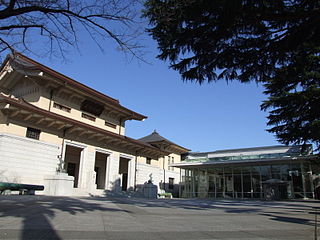 W
WThe 1619 Project is a long-form journalism project developed by Nikole Hannah-Jones, writers from The New York Times, and The New York Times Magazine which "aims to reframe the country's history by placing the consequences of slavery and the contributions of Black Americans at the very center of the United States' national narrative". The project was first published in The New York Times Magazine in August 2019 for the 400th anniversary of the arrival of the first enslaved Africans in colonial Virginia. The project later included a broadsheet article, live events, and a podcast.
 W
WThe 1776 Commission was an advisory committee established in September 2020 by then–U.S. President Donald Trump to support what he called "patriotic education". The commission, which included no historians specializing in United States history, released The 1776 Report on January 18, 2021, two days before the end of Trump's term. Historians condemned the report, saying it was "filled with errors and partisan politics". The commission was terminated by President Joe Biden on January 20, 2021.
 W
WAntiquization, sometimes also ancient Macedonism, is a term used mainly to critically describe the identity policies conducted by the nationalist VMRO-DPMNE-led governments of North Macedonia in the period between 2006 and 2017. In the contemporary Macedonian discourse, antiquization refers to the identitarian policies based on the assumption that there is a direct link between today's ethnic Macedonians and Ancient Macedonians. The recent politics of history therefore not only embrace the recollection of the alleged ancient heritage of the Ancient Macedonians, i.e. the heritage of Philip II and his son Alexander the Great, but also seek to depict a coherent continuity of history from the ancient Kingdom of Macedon until the modern Republic of North Macedonia in order to reveal the uniqueness of the modern Macedonians and their country. This continuous and supposedly linear historiography includes the assertion that the modern ethnic Macedonians are direct descendants of the Ancient Macedonians. The expression “antiquization” originates from the history of arts and describes "the Renaissance practice of giving a city the appearance of ancient Rome or Athens through the introduction of structures organized in the classical mode". Critics use the term "antiquization" in order to reveal "a state-framed set of actions such as direct interventions in the public space and in the public sphere of society in general".
 W
WYousef Azizi (Bani-Torof) is an Iranian Arab journalist and Arab nationalist living in exile in London, United Kingdom. Azizi is a former member of the Association of Iran's Writers and has translated many works from Arabic to Persian. He has adopted a second surname, Bani-Torof, to indicate his roots from the "Bani Torof" Arab tribe.
 W
WBonifacio: Ang Unang Pangulo is a 2014 Philippine historical action drama film centering on the life of Katipunan revolutionary Andres Bonifacio. It is an official entry to the 40th Metro Manila Film Festival.
 W
WJoan of Arc, a French historical figure executed by the English for heresy in 1431, is a national heroine of France and a Roman Catholic saint. Joan accompanied an army during the Hundred Years War, adopting the clothing of a soldier, which ultimately provided a pretense for her conviction and execution. Whether her crossdressing and lifestyle have implications for her sexuality or gender identity is debated.
 W
WThe Dead Sea Scrolls and the Christian myth is a 1979 book about the Dead Sea Scrolls, Essenes and early Christianity that proposes the non-existence of Jesus Christ. It was written by John Marco Allegro (1922–1988).
 W
WThe Eastern Origins of Western Civilisation, written by the political scientist John M. Hobson in 2004, is a book that argues against the historical theory of the rise of the West after 1492 as a "virgin birth", but rather as a product of Western interactions with a more technically and socially advanced Eastern civilization.
 W
WThe Electric Bond and Share Company (Ebasco) was a United States electric utility holding company organized by General Electric. It was forced to divest its holding companies and reorganize due to the passage of the Public Utility Holding Company Act of 1935. Following the passage of the Act, the U.S. Securities and Exchange Commission (SEC) selected the largest of the U.S. holding companies, Ebasco to be the test case of the law before the U.S. Supreme Court. The court case known as Securities and Exchange Commission v. Electric Bond and Share company was settled in favor of the SEC on March 28th 1938. It took twenty-five years of legal action by the SEC to break up Ebasco and the other major U.S. electric holding companies until they conformed with the 1935 act. It was allowed to retain control of its foreign electric power holding company known as the American & Foreign Power Company (A&FP). After its reorganization, it became an investment company, but soon turned into a major designer and engineer of both fossil fuel and nuclear power electric generation facilities. Its involvement in the 1983 financial collapse of the Washington Public Power Supply System's five nuclear reactors led to Ebasco's demise because of the suspension of nuclear power orders and lawsuits that included numerous asbestos claims. The U.S. nuclear industry stopped all construction of new facilities following the 1979 nuclear meltdown at Three Mile Island, going into decline because of radiation safety concerns and major construction cost overruns.
 W
WThe program of the Polish Law and Justice PiS) party has chapters on "identity" ("tożsamość") and "historical policy". The implementation of the historical policy of Law and Justice consists in promoting both inside Poland and internationally a version of history based on Polish nationalism that focuses on protecting the "good name" of the Polish nation. For the party, the "Polish nation" is defined in terms of ethnicity, rather than civic participation.
 W
W"Italians [are] decent people" is a phrase coined by historians to refer to Italian popular beliefs about the participation of Fascist Italy and the Royal Italian Army in the Holocaust and war crimes committed by Axis soldiers during World War II. A form of historical revisionism which emerged under the post-war republic, it was argued that Italian soldiers had been "good" or "decent people" who had acted with humanity and compassion in contrast to their ideologically motivated and brutal German allies. In particular, it argued that the Italians had not participated in, or even opposed, the Nazi persecution of Jews in occupied parts of Eastern Europe. By extension, the term is sometimes applied to describe popular beliefs about the Italo-Ethiopian War (1935–6) or non-Jewish responses to the Holocaust in Italy.
 W
WThe unknown years of Jesus generally refers to the period of Jesus's life between his childhood and the beginning of his ministry, a period not described in the New Testament.
 W
WThe unknown years of Jesus generally refers to the period of Jesus's life between his childhood and the beginning of his ministry, a period not described in the New Testament.
 W
WThere are a number of revisionist theories about Joan of Arc which contradict the established account of her life. These include the theory that she was in fact guilty of the heresy for which she was condemned; that bones and other alleged relics come from her; that she escaped death at the stake and lived out her life in secret.
 W
WKorean nationalist historiography is a way of writing Korean history that centers on the Korean minjok, an ethnically or racially defined Korean nation. This kind of historiography emerged in the early twentieth century among Korean intellectuals who wanted to foster national consciousness to achieve Korean independence from Japanese domination. Its first proponent was journalist and independence activist Shin Chaeho (1880–1936). In his polemical New Reading of History, which was published in 1908 three years after Korea became a Japanese protectorate, Shin proclaimed that Korean history was the history of the Korean minjok, a distinct race descended from the god Dangun that had once controlled not only the Korean peninsula but also large parts of Manchuria. Nationalist historians made expansive claims to the territory of these ancient "Korean" kingdoms, by which the present state of the minjok was to be judged.
 W
WVlado Košić is Croatian bishop, leader of the Roman Catholic Diocese of Sisak.
 W
WLies Across America, a 1999 book by James Loewen, is a sequel to his 1995 work Lies My Teacher Told Me. The book focuses on historical markers and museums across the United States, arguing that every historic site is "a tale of two eras": the one from when the event happened and the one from when the event was commemorated.
 W
WLies My Teacher Told Me: Everything Your American History Textbook Got Wrong is a 1995 book by James W. Loewen, a sociologist. It critically examines twelve popular American high school history textbooks and concludes that the textbook authors propagate false, Eurocentric and mythologized views of American history. In addition to his critique of the dominant historical themes presented in high school textbooks, Loewen presents themes that he says are ignored by traditional history textbooks.
 W
WMaafa, African Holocaust, Holocaust of Enslavement, or Black Holocaust are political neologisms popularized from 1988 onwards and used to describe the history and ongoing effects of atrocities inflicted on African people, particularly when committed by non-Africans which continues to the present day through imperialism, colonialism and other forms of oppression. For example, Maulana Karenga (2001) puts slavery in the broader context of the Maafa, suggesting that its effects exceed mere physical persecution and legal disenfranchisement: the "destruction of human possibility involved redefining African humanity to the world, poisoning past, present and future relations with others who only know us through this stereotyping and thus damaging the truly human relations among peoples".
 W
WThe Myth of the Eastern Front: The Nazi–Soviet War in American Popular Culture is a 2008 book by the American historians Ronald Smelser and Edward J. Davies of the University of Utah. It discusses perceptions of the Eastern Front of World War II in the United States in the context of historical revisionism. The book traces the foundation of the post-war myth of the "Clean Wehrmacht", its support by US military officials, and the impact of Wehrmacht and Waffen-SS mythology on American popular culture, up to the time of its publication.
 W
WThe Osaka International Peace Center , also known as Peace Osaka , is a peace museum established in August 1991 based in the city of Osaka, Japan. It focuses on the destruction of the city during World War II and the broader themes of the tragedy of war and the importance of peace. It is funded by Osaka city and Osaka Prefecture.
 W
WReport about Case Srebrenica was a controversial official report on the July 1995 Srebrenica massacre in eastern Bosnia and Herzegovina. It was prepared by Darko Trifunović and published by the Republika Srpska Government Bureau for Relations with the International Criminal Tribunal for the Former Yugoslavia (ICTY).
 W
WMurray Newton Rothbard was an American heterodox economist of the Austrian School, economic historian and political theorist. Rothbard was the founder and leading theoretician of anarcho-capitalism, a staunch advocate of historical revisionism and a central figure in the 20th-century American libertarian movement. He wrote over twenty books on political theory, revisionist history, economics, and other subjects.
 W
WWaffen-SS im Einsatz is a 1953 book in German by Paul Hausser, a former high-ranking Waffen-SS member and a leader of the Waffen-SS lobby group HIAG. As part of the organisation's revisionist agenda, it advanced the idea of the purely military role of the Waffen-SS.
 W
WThe Yūshūkan (遊就館) is a Japanese military and war museum located within Yasukuni Shrine in Chiyoda, Tokyo. As a museum maintained by the shrine, which is dedicated to the souls of soldiers who died fighting on behalf of the Emperor of Japan, the museum contains various artifacts and documents concerning Japanese war casualties and military activity from the start of the Meiji Restoration to the end of World War II. The museum was established in 1882, and describes itself as the first and oldest war and military museum in Japan.